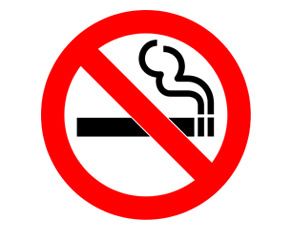

A Universidade Estadual Paulista's team is conducted several studies on quitting smoking The initiative was the highlight of the European Respiratory Congress
A Universidade Estadual Paulista's team is conducted several studies on quitting smoking The initiative was the highlight of the European Respiratory Congress.
A Universidade Estadual Paulista's team is conducted several studies on quitting smoking The initiative was the highlight of the European Respiratory Congress.

A Universidade Estadual Paulista's team is conducted several studies on quitting smoking The initiative was the highlight of the European Respiratory Congress
By Karina Toledo
Agência FAPESP – The high success rate obtained by Universidade Estadual Paulista’s (Unesp) Anti-tobacco Program in Presidente Prudente was the highlight of the 2011 European Respiratory Congress, held in Holland.
Like similar initiatives, the program, coordinated by professors Ercy Ramos and Dionei Ramos, both of Unesp’s Department of Physiotherapy at the Science and Technology School, combines group therapy, medicine and multidisciplinary treatment.
After 13 months of treatment, 35% of the smokers enrolled in the program had managed to avoid cigarettes. According to the scientific literature, the average for similar programs is 27%. In the case of patients who receive only medication as treatment, some 6% to 12% manage to overcome the addiction. Among those who attempt to quit alone, the success rate is just 2%.
“I believe that our results are better because we spend more time with smokers at the beginning of the process, which is when he or she needs more support,” explains Ercy Ramos.
In the first two months of treatment, smokers participate in two hour-long meetings each week. Ercy Ramos notes, “In other programs, the sessions are normally held just once a week.”
These meetings are a type of group therapy in which smokers talk about their difficulties, and psychologists give them advice to overcome the desire to smoke. “Chemical dependence can be resolved with nicotine replacement therapy, but the psycho-emotional factor is much more difficult to overcome.”
Before beginning the program, patients undergo a physical and psychological evaluation. “Physical therapists conduct tests to evaluate the state of the respiratory system, physical capacity, anxiety level, depression and quality of life. With this, the degree of motivation to quit smoking can be measured. This allows us to identify who needs a different approach,” Ercy Ramos explains.
The sixth meeting in the third week is the date for participants to stop smoking cigarettes. “The following days are the most difficult because of the abstinence symptoms. The closer the meetings are, the better,” Ercy Ramos affirmed. In the third month, the meetings are held every 15 days, and in the fifth month, participants meet monthly.
Research
Although the main objective of the program is to help smokers abandon the vice, Unesp’s team conducts other studies related to quitting smoking. In one of these studies, funded by FAPESP, the researchers have shown for the first time that mucociliary transport in smokers returns to normal 15 days after the last cigarette.
Mucociliary transport is the main defense mechanism of the respiratory system. This mechanism is responsible for moving bacteria, viruses, allergens and pollutants in the direction of the oropharynx, where they are swallowed. When this mechanism does not function properly, susceptibility to respiratory infections is increased.
“We knew that mucociliary transport is slower, but we wanted to discover if when a person stops smoking, the system recovers and how long it takes. In an article that we published in Respirology, we showed the reversibility of the mucociliary transportation in individuals that are in an anti-tobacco program,” says Ercy Ramos.
In another article published in the Revista Portuguesa de Pneumologia, the researchers showed the immediate and short-term impact of quitting smoking on mucociliary transport.
“We verified that immediately after smoking, the system works as rapidly as in non-smokers. But when the volunteers were evaluated eight hours after their last cigarette, the functioning of cilia was much slower,” explains Ercy Ramos.
To gauge the speed of mucociliary transport, the scientists placed 2.5 micrograms of saccharine in the right nostril of volunteers and observed how long it took them to taste the sweetener. This test is called the saccharine transit test. “A non-smoker takes 12 to 15 minutes to taste it. The tobacco users took an average of 20 minutes,” Ercy Ramos says.
The team initiated a new project financed by FAPESP. The objective of this project is to test the hypothesis that physical activity plays a role in protecting smokers against chronic obstructive pulmonary disease (COPD).
“We know that moderate physical exercise improves mucociliary transport in healthy people. Now we will evaluate whether tobacco users react in the same way to physical stimulus,” explains Ercy Ramos.
Unesp’s anti-tobacco program has been operating since 2002 and is free to people over 18 years old. Participation in the studies is voluntary. For more information, call 55-(18) 3229-5821 or (18) 3229-5800.
Republish
The Agency FAPESP licenses news via Creative Commons (CC-BY-NC-ND) so that they can be republished free of charge and in a simple way by other digital or printed vehicles. Agência FAPESP must be credited as the source of the content being republished and the name of the reporter (if any) must be attributed. Using the HMTL button below allows compliance with these rules, detailed in Digital Republishing Policy FAPESP.





